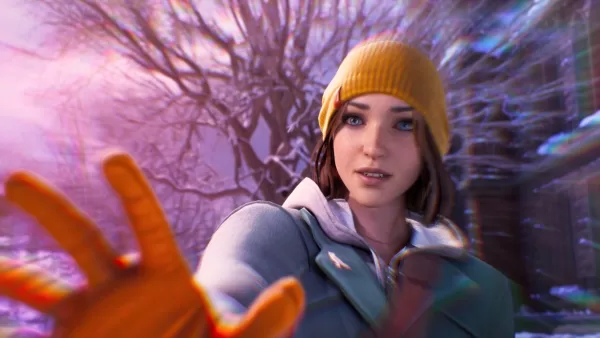Life is Strange: Double Exposure Review | Not in focus
Max is back!

A new Life is Strange game was never going to be an easy road for developers Deck Nine. The original has an incredibly passionate fanbase generated by incredible character writing and a striking final conclusion that is still felt to this day. While Life is Strange: Double Exposure does show inklings of brilliance every now and then, it ultimately falls flat compared to the high standards that were left by previous entries. While a great game in its own right, it might cause some divide from franchise regulars. Here is our Life is Strange: Double Exposure review.
The original Life is Strange left an unforgettable mark on players worldwide, receiving critical acclaim for its story, authentic character writing, and the unique gameplay mechanic to rewind time to alter choices. Max Caulfield’s journey—navigating friendship, identity, and the mysterious dangers in the town of Arcadia Bay—resonated deeply with fans, making her and her friend Chloe iconic personalities. The game’s exploration of mental health, family struggles, and difficult choices made it more than just a game; it was a relatable and impactful narrative experience that still holds significance for players years later. That’s a tough act to follow for Deck Nine and it shows with Double Exposure. While not a complete misfire, it does struggle to keep everything in clear picture.
When it clicks

In Life is Strange: Double Exposure, players again take on the role of Max, but in a new chapter that brings fresh challenges and powers. it’s once again a true choose-your-own-adventure experience, with each decision opening up genuine alternatives, none of which feel like a simple right-or-wrong path. Relationships with other characters are especially dynamic, with interactions that adapt based on previous choices. This responsiveness gives Double Exposure a great replayability factor, making each playthrough unique and equally compelling.
The game tackles real-world themes—mental health, separation, and even the emotional weight of loss—with an authenticity that feels both thoughtful and grounded. The writing captures these sensitive topics naturally, and the characters’ dialogue flows with a self-awareness that makes the narrative impactful without being heavy-handed.
Double Exposure is amazing on both visual and audio aspects. The soundtrack, rich color palette, and great cutscene direction create a vivid atmosphere that enhances the emotional weight of each moment. The environments are packed with detail, encouraging players to explore and discover subtle storytelling elements tucked into the game world. The game is at its best in Max’s internal reflections; the way she speaks, her mature perspective, and her memories of her younger self feel refreshing. Yet, there’s an unfortunate absence of Chloe, a figure central to Max’s character development, which feels out of place given their shared history. The way they handle setting her aside feels a bit cheap considering what happened before.

Voice acting and animation quality are top-notch, but the character interactions can feel inconsistent. Sometimes, Max’s presence feels like a nuisance to others, and the warmth or connection she should ideally have with her students as a university teacher doesn’t always translate. This lack of depth in her relationships sometimes leaves conversations feeling hollow, which, while rare, stands out against the strong writing in other areas.
Double Exposure also brings a new power for Max: the ability to jump between realities. This creates a unique twist, as players must juggle two timelines—one where her friend Safi is dead and another where she isn’t. Trying to prevent Safi’s murder while finding out its aftermath brings a fascinating duality to the game’s plot, although this complexity can make the narrative a bit hard to follow. The smartphone-style UI aims to clarify the story, but it can be overwhelming at times, and the in-game font feels oddly cheap, as though it didn’t go through the final polish stages.
Life is Strange: Double Exposure Review Final Verdict – 6.5/10

Ultimately, Life is Strange: Double Exposure is a slightly shaky return to a beloved series. It has the meaningful choices, nuanced storytelling, and a richly detailed world. Though the plot can feel convoluted, the journey of navigating parallel realities is an intriguing, albeit questionable at times, evolution of Max’s story that I’m not so sure if series veterans will appreciate or newcomers will connect with.
Probably its biggest flaw is the fact that it is not beginner friendly. If you’re someone who’s jumping into the series for the first time, Double Exposure’s story loses a lot of its emotional pull.
This review was made using a game code for the PC and PS5 provided by the publisher.

